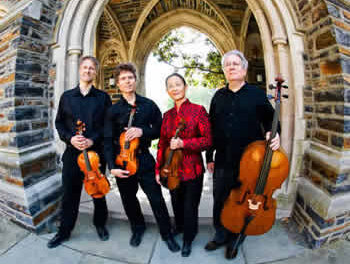Under the direction of Alfred E. Sturgis, the North Carolina Master Chorale completely filled the sanctuary of Hayes Barton Baptist Church with their powerful sound. Despite the Chorale’s expansive size, even the quietest sections of music were powerful, due to the Chorale’s precision and dynamic focus. Along with the symphony orchestra and Kevin Kerstetter playing the organ, the Chorale performed requiems by Gabriel Fauré and Maurice Duruflé. These two requiems, written about 70 years apart by these French composers, mostly follow the typical Requiem structure; both Requiems omit the Dies Irae movement, instead adding In Paradisum as the final movement.
The Introit movement of Fauré’s Requiem began the concert with unison note between the orchestra and chorale. The Kyrie flowed seamlessly after, with the text “Lord have mercy on us” sung passionately by the chorale, reflecting the personal nature of the words. In Domine Jesu Christe, the chorale and orchestra interacted directly, trading melodic phrases back and forth. Half of this text was sung by bass soloist David Mellnik, whose resonant vibrato and dynamic control served him well in the large sanctuary. The Sanctus was mesmerizing, with the harp’s flowing motion supporting several countermelodies between the voices and instruments. Particularly notable was a solo violin countermelody that repeated several times throughout the section.
Another soloist, this time soprano Megan Crosson, was featured in Pie Jesu. Her lullaby-like and legato phrases blended well with organ accompaniment, and she led the dynamic rise and fall when singing with the orchestra. Both the Angus Dei and Lux Aeterna contained some of the most climactic moments of Fauré’s work, with several dramatic crescendos. This movement ends with a resetting of the Introit text, with a beautifully memorable melody played by the orchestra. The Libera Me served as the most urgent section of the work, with its pulsing bass, insistent melody, and dynamically tumultuous phrases. In contrast, the concluding movement, In Paradisum is at once peaceful and calming.
Duruflé’s Requiem, though similar in structure to Fauré’s, contrasts slightly in style. This requiem is more polyphonic, and often each instrument and voice section has its own independent melody. The Introit exemplifies this, containing varied rhythms. In the Kyrie, the overlapping phrases lead to impressive crescendos as more phrases are added from each section. Since each phrase tends to climax at differing times, high energy is sustained through the movement. The organ typically serves as the backbone of the entire ensemble’s chords; in Domine Jesu Christe, the organ provides a dissonant and gloomy sound, reflected by the string instruments as well. The chorale’s abrupt forte is accompanied by the use of booming timpani. Through these dynamic and textural changes, the Chorale’s precise blend remained unchanged. The following movement, Sanctus, is a great contrast with homophonic texture at the beginning, leading to a huge crescendo. The Pie Jesu and Agnus Dei are more meditative, with resonant melodies sung in unison, while the Lux Aeterna contains more varied voicing. The stately Libera Me movement begins with a strong horn proclamation, leading into a powerful chorale melody that becomes a veritable wave of sound. Rapid strings and thunderous drum cracks round out this insistent movement. The final movement, In Paradisum, quietly draws the grand Requiem to a close.











